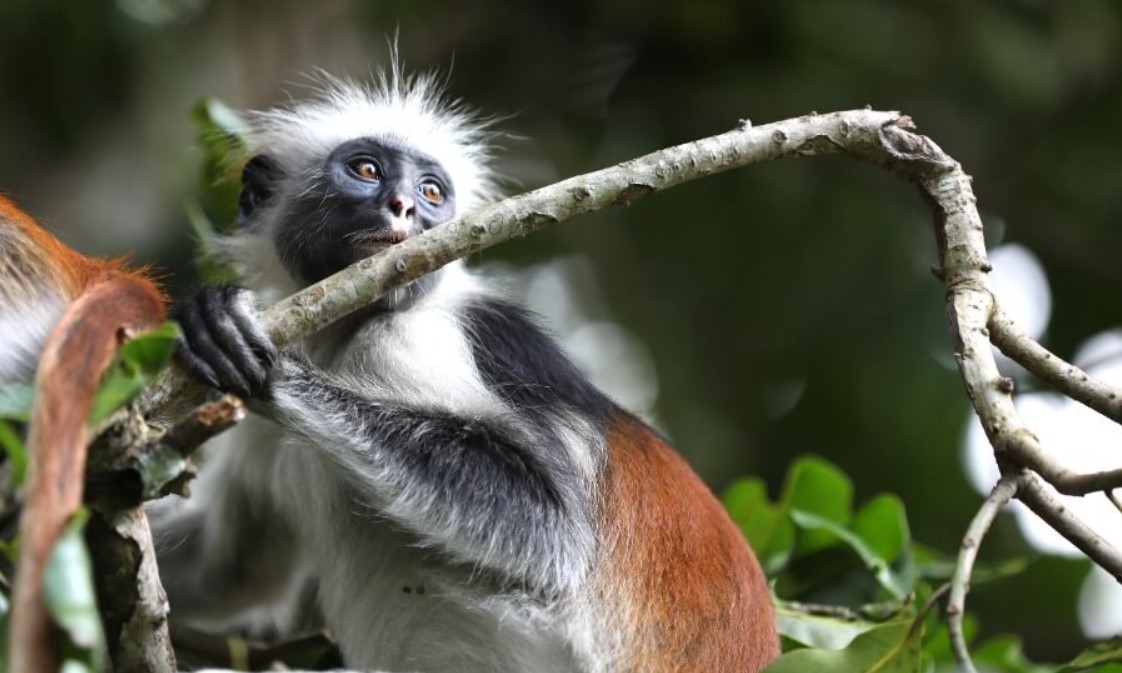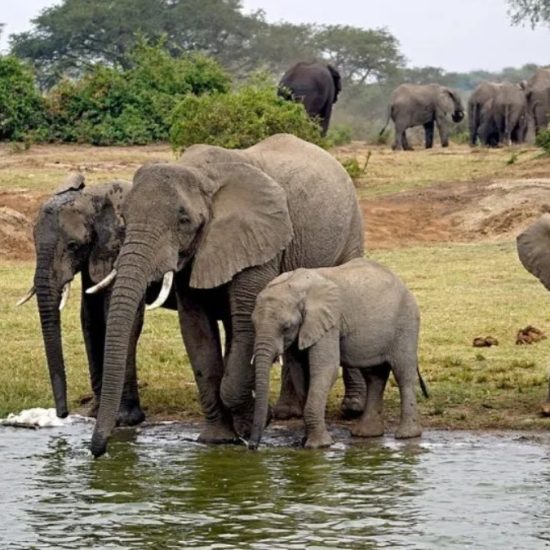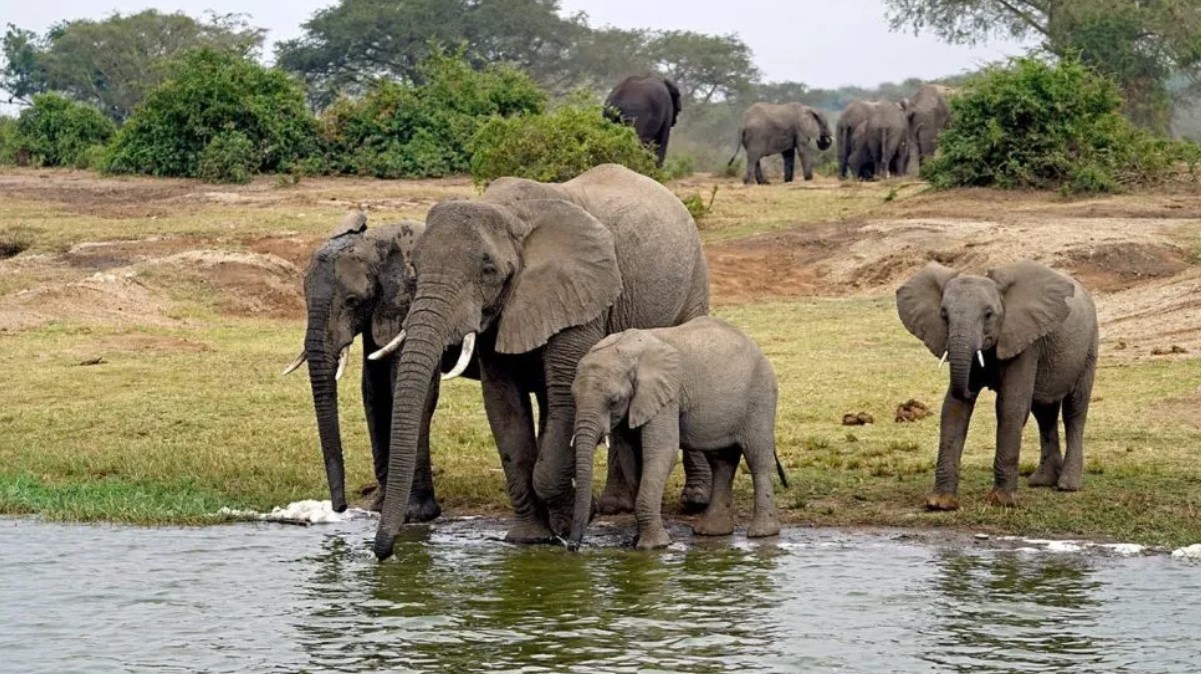
Unique Primates in Burundi
Unique Primates in Burundi: Primate safaris are available in Burundi, with chimpanzee trekking being the main attraction at Kibira National Park, an extension of Rwanda’s Nyungwe Forest National Park. In order to see various primates, several travel organizers also recommend a trip to Rusizi National Park. Burundi is renowned for its stunning scenery, which includes Lake Tanganyika, mountains, and tropical forests. Various primates to see on your safari to Burundi include; Rwenzori Colobus, Chimpanzees, Vervet Monkeys, East African Potto, Johnston’s mangabey, Dusky bushbaby, Prince Demidoff’s bushbaby, silver monkey, L’Hoest’s Monkey, Grey-Cheeked Mangabey as we will discuss some of them below
Chimpanzees in Burundi
A large ape species of chimpanzees indigenous to tropical Africa’s forests and grasslands (Pan troglodytes). This species was popularly referred to as the Common Chimpanzee or the Robust Chimpanzee, while its near relative, the bonobo, was also known as the Pygmy Chimpanzee. In Western popular culture, chimpanzees are frequently appearing as stereotypical clown characters. They have also been included in entertainment, including stage plays, circus acts, and tea parties. Many chimpanzees have been kept as pets, but they are dangerous because of their strength, aggression, and unpredictable nature.
With the exception of their palms, faces, and the soles of their two feet, chimpanzees are huge apes with long, black hair that evenly covers their bodies. Depending on their age, the hairless areas of their bodies range in hue from pale to dark brown. They have big ears and a thick brow ridge over their eyes. Chimpanzees can perceive colour and have strong vision. They have an opposable big toe and lengthy fingers. Chimpanzees can knuckle-walk, or move around on all fours, since their arms are longer than their legs. Their 32 teeth resemble those of humans quite a bit.
Being omnivores, chimpanzees consume a wide range of foods. Tree-picked fruits, flowers, and seeds make up the majority of their food. Additionally, they consume termites, ants, and other insects that are removed from their nests with a stick. Additionally, they consume the water from the chewed leaves, absorbing it like a sponge.
Vervet Monkeys in Burundi
An Old-World monkey indigenous to Africa, a Vervet Monkey (Chlorocebus pygerythrus). Every member of the genus Chlorocebus is also referred to as a “vervet” in this context. These primates live in social groups that include communication and make alarm screams particularly when they recognize their family members, other members of their group, or potential predators.
Vervet monkey is a medium – large size with black-tipped tail sometimes longer than its body. Its underbelly is paler than the rest of its olive or gray fur. Its face, ears, and hands and feet are all black. White cheek tufts line with the white band over its face. The monkey can walk on its arms and legs with ease on the ground because they are almost the same length as one another. This actually makes it rather fast while sprinting. Males are often larger than females.
Being omnivores, vervet monkeys eat both plants and other organisms. They mostly eat young shoots and leaves, but they sometimes eat bark, fruits, flowers, and fruits from nearby trees. They graze for roots, bulbs, grasses, and seeds on the ground. Occasionally, they add eggs, rodents, insects, birds, and other small animals to their diet.
Olive Baboon
The olive baboon (Papio anubis) is a member of Old-World monkeys. The species, which is indigenous to 25 African countries, and the most widely distributed of all baboons.
The olive baboon generates its name from the green-grey colour of its fur when seen from a distance. The fur looks multi-coloured at close distance because of the black and yellow-brown bands on the tufts. The baboon’s face has coarser hair that is dark gray to black in colour. Although males have a mane of longer hair that tapers down to regular length down the back, both sexes share this coloration. The Olive baboon has a long, canine-like muzzle, just as other species of baboons. The species appear canine in shape because to its four-legged movement and 38 to 58 cm (15 to 23 in) long tail.
Olive baboons spend the most of their time on the ground and are diurnal. They spend the night in trees or on cliffs, and in the morning, they move together as a family to feeding sites. While the young ones are playing, family members socialize before they start moving in search for food. They return to their sleeping areas as the day draws to a close and once again socialize while engaging in grooming and other activities before going to sleep. Olive baboons typically live in troops of 20–60 individuals, but at times they are as many as 100 in a troop. In a normal troop, there are 7 or 8 adult males and twice as the number of females and their offspring.
Being omnivores, olive baboons are skilled at finding food in all three areas of their habitat: trees, the ground, and under ground. They feed on fish, frogs, eggs, insects, lizards, turtles, grasses, seeds, roots, fruits, leaves, bark, young birds, young mammals, including other primates, and crocodile eggs. They feed on whatever is available to them. To flush out a potential meal, they walk or sit and shuffle in the grass with their hands and feet.
Prince Demidoff’s bushbaby
Prince Demidoff galago
Prince Demidoff galago, or Prince Demidoff bushbaby (Galagoides demidovii), is a species of primates that belongs to the Galagidae family. Parts of tropical West and Central Africa are its habitat.
The head and body length of Prince Demidoff bushbaby range from 73 to 155 mm (2.9 to 6.1 in), while the tail measures 110 to 215 mm (4.3 to 8.5 in). The eyes are colored differently, and the skull is small with a pointed nose. The tail is not bushy, the underparts are paler, and the top parts are reddish-brown.
Prince Demidoff bushbaby is arboreal and a nocturnal species, just as much as other galagos. It sleeps during the day in a nest that is 5 to 40 meters (16 to 131 feet) above the ground and is constructed of thick vegetation or leaves. In addition to feeding on fruits and gum exudate, it forages for insects at night, primarily beetles and moths. It has a maximum horizontal height of 2 meters (7 feet). Male species compete fiercely with one another throughout the breeding season. With a gestation period of around 112 days, females typically become pregnant once a year.
Silver monkey
The silver monkey (Cercopithecus doggetti) is a member of the old-world monkey species mostly found in East Africa. Burundi, Tanzania, Rwanda, Uganda, and the Democratic Republic of the Congo are among its habitats. In the past, the silver monkey was thought to be a subspecies of the Cercopithecus mitis, or blue monkey.
Despite being uncommon, silver monkeys are found in the mountainous regions of Burundi, particularly in Kibira National Park. This national park is home to a variety of species of primates that you would want to see on a safari in Burundi so that you may have an experience of a lifetime.
Previous to their recent classification as distinct species, they were thought to be subspecies of the blue monkeys (Cercopithecus mitis). Because of this, the majority of people continue to mix up these two distinct species.
Like most of its cousins in the Cercopithecoidea family, silver monkeys are usually nocturnal, dwell in trees, and remain in troops consisting of a dominating Alpha male, a female, and juveniles. Grooming typically strengthens the relationship between female adults and their offsprings.
Interestingly, female silver monkeys are the ones that initiate mating with males, and after a gestation period of five months, a single offspring is produced.
It’s important to note that silver monkeys attain sexual maturity at the same time—3 years—for both males and females.
Male silver monkeys, like females, attain sexual maturity at age of 3 years, and they live for 20 to 25 years.
Naturally folivorous and frugivorous, these monkeys mostly feed on leaves and fruits, however they also occasionally eat tiny insects when resources are few. The frugivorous habit of silver monkeys is thought to have had a significant role in the spread of seeds in the woods in which they reside.
Narrow noses and septum, hard patches of exposed skin on the buttocks, bony scar channels, two massive pre-molars in each jaw half, and a tight pair of nostrils pointing either forward or downward are characteristics of silver monkeys. These primates also have cheek pouches.
In conclusion, Primate safaris to Burundi offers a great chance to see most of the Africa’s ancient primate species that belong to the old-world some of which are endemic to Africa and highly extinct





